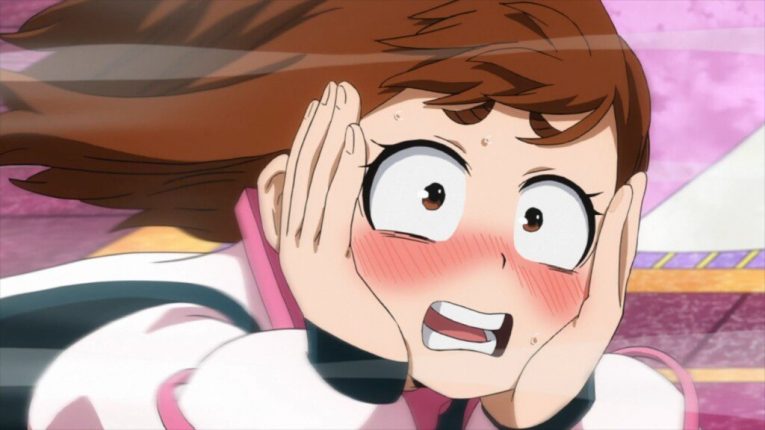Exploring the World of Hentai: A Fascinating Insight into the Art and Culture
This blog post provides an in-depth exploration of the world of hentai, a unique art form originating from Japan that has gained popularity worldwide. We delve into what hentai is, its historical roots, various genres and subgenres, its impact on popular culture, and address common misconceptions surrounding this genre. Join us for a captivating journey through this fascinating aspect of Japanese art and culture.
Introduction to Hentai
Hentai is a genre of adult-oriented Japanese animation or manga that primarily focuses on explicit sexual content. The term “hentai” translates to “pervert” or “perversion” in Japanese. Although often associated with pornography, hentai encompasses a wide range of artistic expressions that explore diverse themes beyond explicit sexual scenes.
Historical Roots
Hentai traces its origins back to the Edo period (1603-1868) in Japan when erotic artwork known as shunga was prevalent. Shunga depicted explicit sexual scenes and was enjoyed by both the aristocracy and common people alike. This early form of erotic art laid the foundation for contemporary hentai and established a tradition of sexually explicit imagery in Japanese culture.
Evolution and Popularization

During the late 20th century, hentai gained momentum through various media platforms such as manga magazines, video games, and animated films. As technology advanced, access to these materials became easier, resulting in increased popularity both within Japan and internationally.
Genres and Subgenres
Hentai offers a multitude of genres catering to different tastes and interests. Some popular genres include:
- Vanilla Hentai: Focuses on consensual relationships between characters without extreme fetishes or unconventional scenarios.
- Yaoi/Yuri Hentai: Targets audiences interested in homosexual relationships involving male (yaoi) or female (yuri) characters.
- Futanari: Explores characters with both male and female genitalia, often involving gender-bending themes.
- Tentacle Hentai: Features supernatural or alien creatures with tentacles engaging in sexual activities with human characters.
- Lolicon/Shotacon: Depicts sexual interactions involving underage-looking characters (often portrayed as adults) and is a controversial genre due to ethical concerns.
Impact on Popular Culture
Hentai has had a significant influence on popular culture, transcending its initial niche audience. Its impact can be seen in various forms:
- Cosplay: Hentai-inspired cosplay has become a popular trend at conventions and events worldwide, where fans dress up as their favorite hentai characters.
- Fan Art: Artists create their interpretations of hentai characters, showcasing their talent and contributing to the overall growth of the genre’s fan base.
- Doujinshi: Independent artists produce self-published manga or illustrations featuring established hentai characters or creating new ones within the genre.
- Censorship Debate: The explicit nature of hentai has sparked discussions on censorship and freedom of expression in various countries.
Misconceptions and Controversies
Hentai often faces criticism and misconceptions due to its explicit content. It is crucial to address these misconceptions to gain a better understanding of the genre:
- Misconception 1 – All Hentai is Non-consensual: While non-consensual scenes exist within some hentai works, many focus on consensual relationships, emphasizing the importance of proper storytelling within the genre.
- Misconception 2 – All Hentai Promotes Pedophilia: Although there are genres like lolicon that depict underage-looking characters, it’s essential to differentiate fiction from reality and understand that not all hentai promotes illegal activities.
- Controversy Surrounding Obscenity Laws: The explicit nature of hentai raises legal questions in different countries regarding obscenity laws and the boundaries of artistic expression.
The Future of Hentai
As hentai continues to evolve, it is expected to embrace new technologies such as virtual reality (VR) and augmented reality (AR). These advancements will enhance the immersive experience for fans, allowing them to engage with their favorite hentai characters in unprecedented ways.
Cultural Significance and Appreciation
Despite its explicit nature, hentai remains an integral part of Japanese culture. It serves as a platform for exploring sexual fantasies, challenging societal norms, and pushing creative boundaries through art. Understanding the cultural significance of hentai helps foster appreciation for its contribution to Japanese art forms as a whole.
Conclusion
Hentai offers a diverse range of artistic expressions that cater to various tastes and interests. Exploring this genre provides insight into the evolution of Japanese art throughout history and its impact on popular culture globally. By dispelling misconceptions, we can appreciate hentai as an intricate aspect of artistic expression while recognizing the ethical considerations surrounding it.
Additional Resources
For further reading and exploration:
- “The Art of Hentai” by Rachel Thorn
- “Manga! Manga! The World Of Japanese Comics” by Frederik L. Schodt
- “Japanese Erotic Fantasies: Sexual Imagery of the Edo Period” by C. Andrew Gerstle